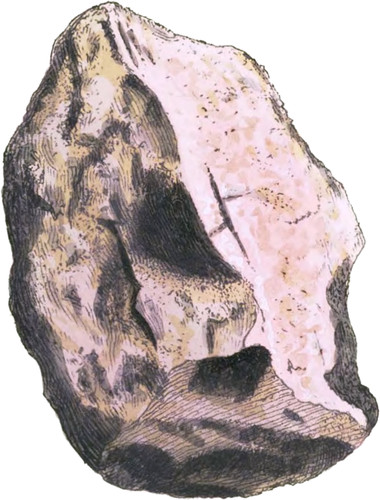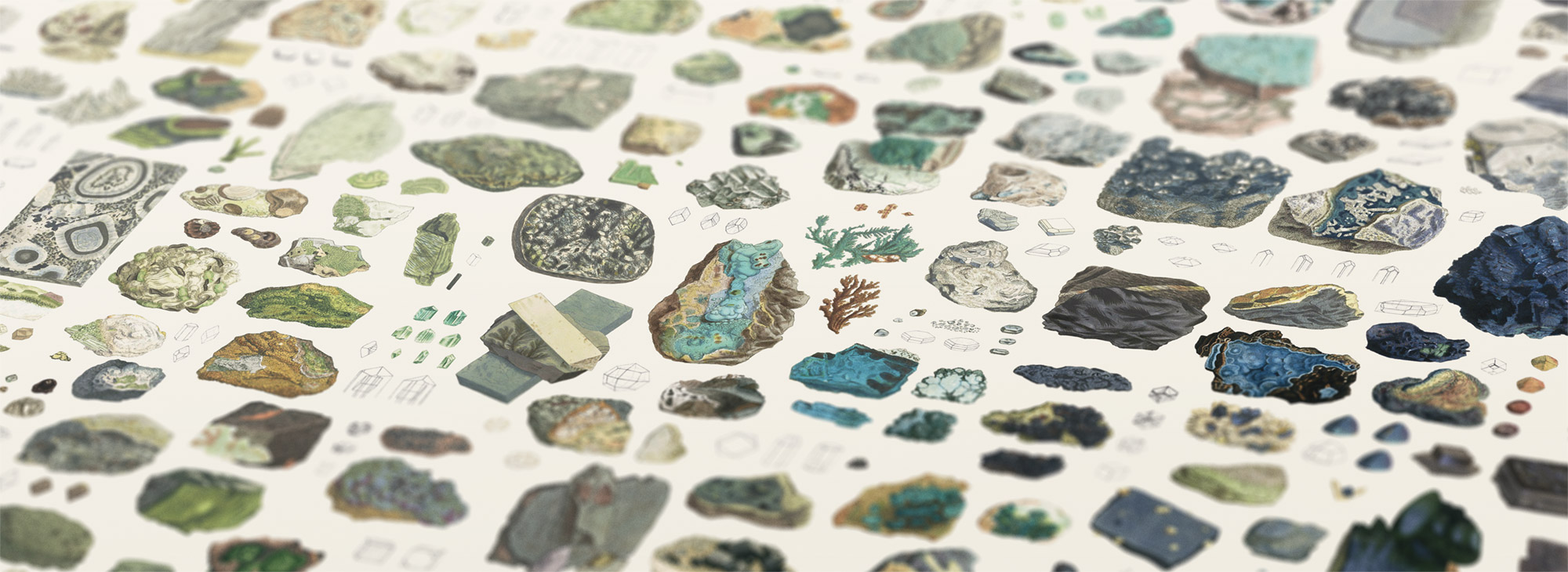 Enlarge
Enlarge
British Mineralogy
Manganesian Feldspar; Rose Manganese
- Syn.
- Manganése Lithoide. Bourn. Cat. p. 397.
- Manganese oxydé rose silicifére Haüy Traité, 4. 428.
It is understood that Manganese here causes the rosy tint the Feldspar has acquired, and it has thus been specifically distinguished; I am doubtful if it be proper to make such distinctions, as it may create endless confusion, for thus every different coloured substance may become a species and confuse distinctions. However, as it has been particularized, it becomes our duty to exhibit it. The specimen was brought me by Mr. Mawe, with the following account of his discovery:—“To the South-West of Calliugton, in Cornwall, Which stands upon a hill of schistus, one mile and a half, the road declining all the way into a deep valley, at the bottom of which holes are dug for manganese, there is a place which has the appearance of a small quarry, about six feet deep, shewing a perpendicular section of the soil or Strata, which consisted of blackish earth a foot or two below the grass. Then an irregular Stratum of hard stone in large fragments both angular and rolled, situated in a bed of Manganese more or less in thickness. In using my hammer to break one of these masses 1 was surprised to find the interior of a beautiful rose colour; this induced me to make more diligent search, and I found the same Stratum on the other side of the road, where 1 employed myself in breaking large masses of this substance, the highest colours of which I selected, and on comparing some specimens with the Siberian, it was difficult to discriminate one from the other I could not discover any means of knowing which piece was best coloured before I broke it, nor did I perceive one part, viz. the outside to be higher coloured than the interior, although the musses were above a foot solid.”
The Manganese was long since supposed to give the crimson tint to many minerals by Bergman, Quartz, and other substances being occasionally tinted with it; but it is probably rather a mechanical than a chemical combination, and may vary in density.

